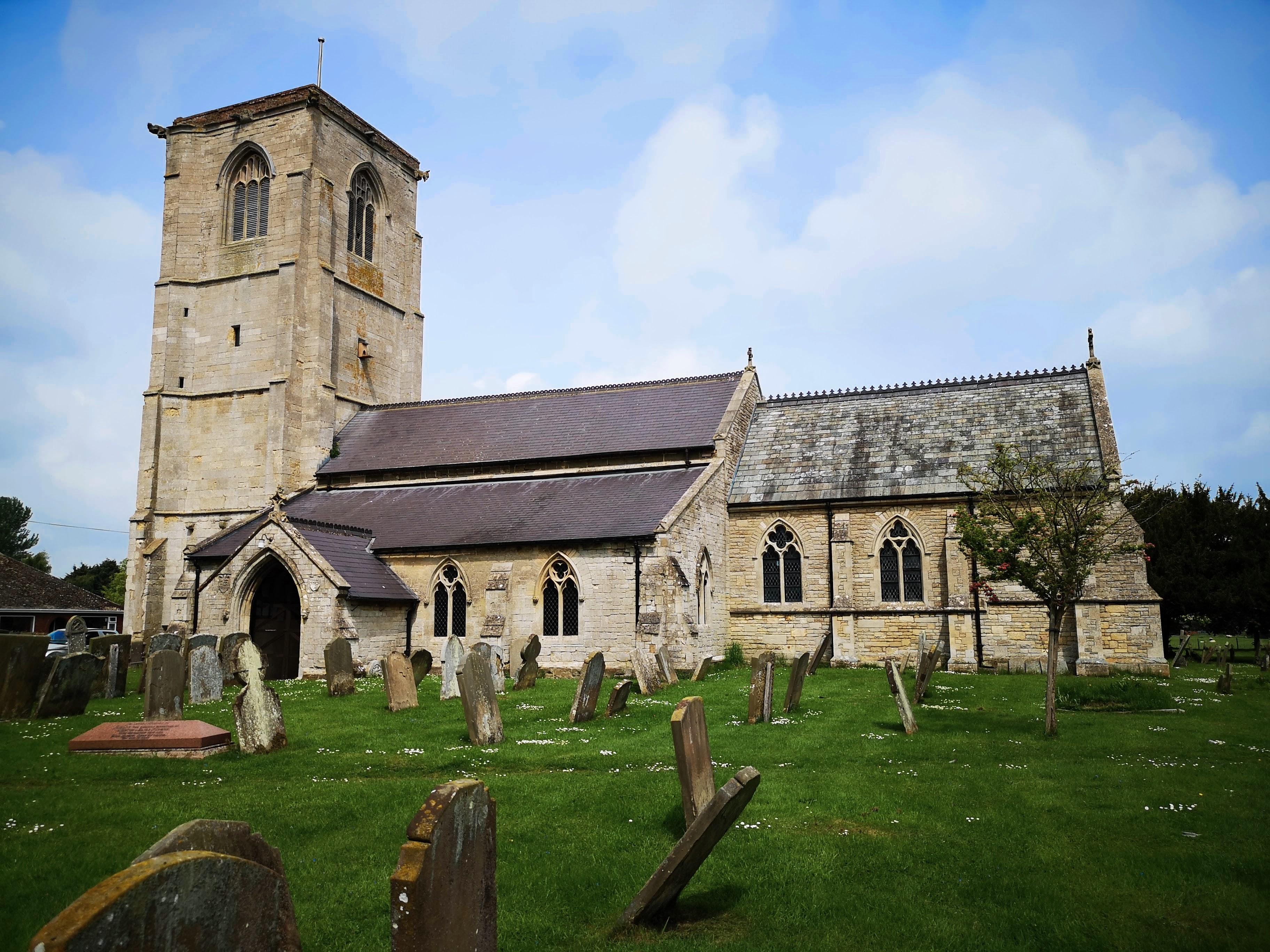St Nicholas
East Kirkby, Lincolnshire
No other church can boast pew ends that were eaten off by horses being stabled overnight by Oliver Cromwell's army during the Battle of Winceby!

Medieval graffiti, unique medieval poppy heads, a medieval bell, all in a small village church which is well worth a visit.
Stickford, Lincolnshire
The north arcade and part of the north aisle survive from the 13th century, with a 14th century south arcade. The tower and font are 15th century. The damage on the font is said to have occurred when Cromwell's soldiers sharpened their swords before the Battle of Winceby.
The major restoration of the church was carried out in 1853 by architect James Fowler of Louth. It was at this time that the roof of the nave was lowered and the clerestory windows removed. A bell dating back to 1490 sits on the floor at the west end of the nave; it was lowered from the tower in 1939 because it was cracked and replaced with another one.
The chancel was rebuilt in 1830 and 1881. It was re roofed in 1996. The nave and north and south aisles were re-roofed in 2002 and the nave ceiling was replaced in 2004. Major work was undertaken on the tower roof in 2008. Water, a toilet and kitchen servery were installed in 1999 and the louvres in the tower replace in 2022.
Of particular interest in the church are the medieval pew ends, some of which have recently undergone conservation treatment at Lincoln University and are on display in the north and south aisles.
East Kirkby, Lincolnshire
No other church can boast pew ends that were eaten off by horses being stabled overnight by Oliver Cromwell's army during the Battle of Winceby!
Stickney, Lincolnshire
St Luke’s most outstanding features are the beautiful stained glass windows and the memorial to Mary Jane Lovell, who went to Palestine in 1892 and founded the Lovell Society for the Blind.
West Keal, Lincolnshire
A place of worship has stood on the site for 900 years although the present building, built of local greenstone, is mainly 14th century.